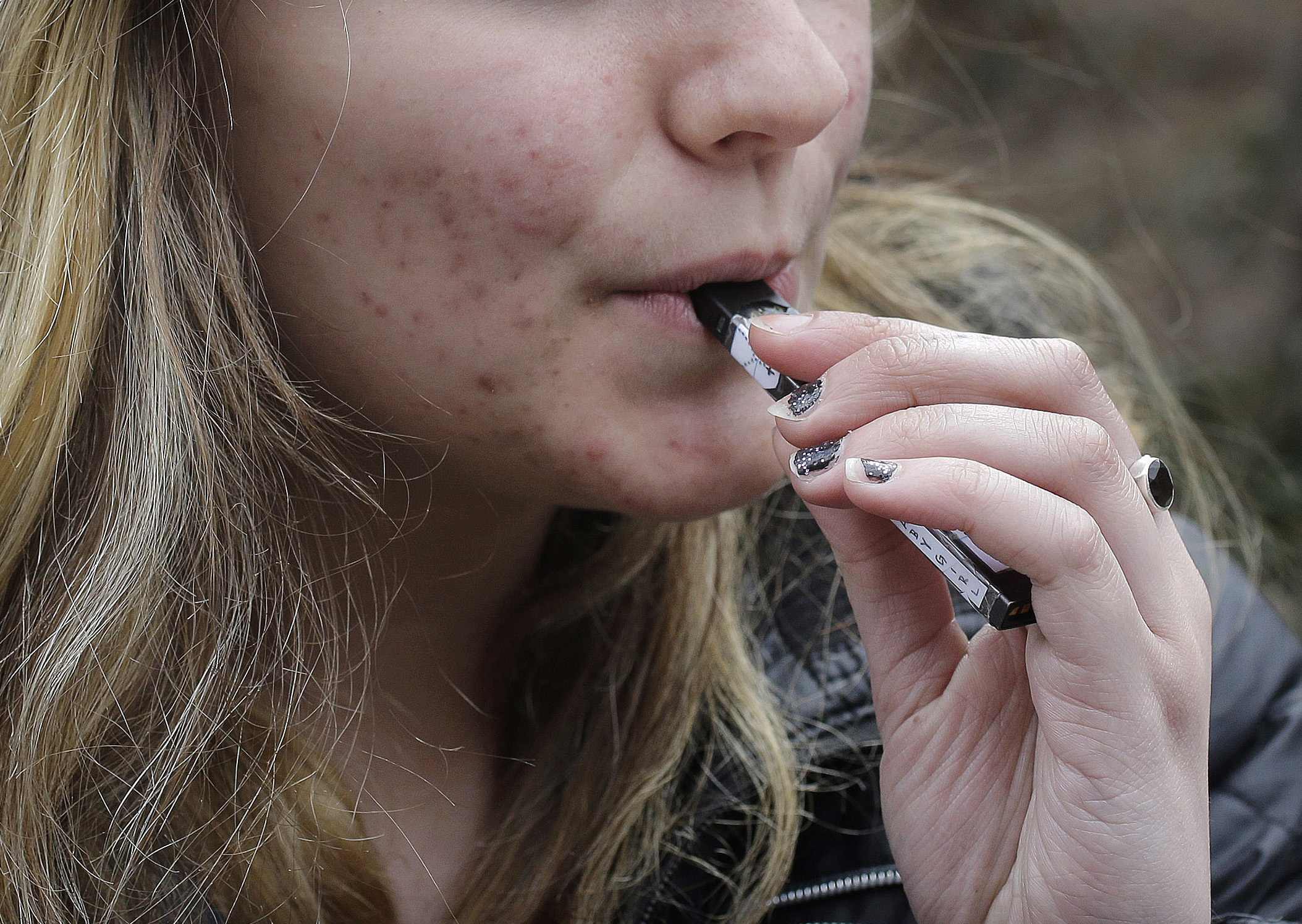
Updated: 2:33 p.m.
Colorado’s sky-high teen vaping rates haven’t budged in the past couple of years, but many more high schoolers do see the habit as risky, according to new data released Monday by the state health department.
The comprehensive statewide survey of more than 100,000 students shows nearly 26 percent of high schoolers said they currently vape nicotine, defined as having smoked an electronic cigarette in the 30 days. The figure is virtually unchanged from 27 percent recorded the last time the survey was conducted two years ago.
Increasingly vaping has displaced traditional cigarettes as the primary way minors consume nicotine. Current use of cigarettes has been trending down in recent years and the latest survey finds less than six percent of youth reported smoking cigarettes. And current use of tobacco (including all tobacco products) is to 28 percent.
In 2017, Colorado youth vaped nicotine at the nation’s highest rate of more than three dozen states surveyed, according to the Centers for Disease Control and Prevention. Colorado youth vaped nicotine at twice the national average. New state-by-state rankings are expected to be released in coming weeks.
One thing that has changed in Colorado is the perception of risk. More than seven in 10 high schoolers say vaping is risky, a spike of 23 percent from the last survey two years ago.
The vast majority of students, 63 percent, said it’s easy to get electronic vapor products if they wanted, a figure that’s up from two years ago.
Regular vaping seems to be more common amongst whites (26.5 percent) and Hispanics (27.2 percent) and those listed as multiple race (26.1 percent). The numbers are lower for Blacks (16.2 percent) and Asians (14.1 percent). Other groups also report high numbers, including American Indian (33 percent) and Hawaiian (35.5 percent), but due to the smaller sample size, that data is considered less reliable.
The survey was conducted last fall, just as an outbreak of vaping-related illnesses swept the country. As of February, more than 2,800 people had been hospitalized from all 50 states and 68 people died. The research pointed the blame at an additive in some THC-containing vape products.
In Colorado, eight people were hospitalized; most were male, the median age was 25.
The survey finds for many students vaping starts early, and the numbers continue to grow through high school. More than 11 percent of eighth-graders said they currently use e-cigarettes; by senior year of high school, nearly a third of students report current e-cigarette use.
Research has raised alarm bells about teen vaping. A 2015 study found well over 90 percent of vaping products sold at convenience stores, supermarkets and mass merchandisers, contained nicotine. Nicotine can harm adolescent brain development causing lasting impairment to the part of the brain “responsible for memory, attention and learning,” according to the CDC.
Besides nicotine, other harmful, potentially harmful or cancer-causing ingredients are found in vape products. Those include ultrafine particles that can make their way deep into lungs, volatile organic compounds, flavor agents like diacetyl, a chemical linked to serious lung disease and heavy metals, like tin, lead and nickel. That’s according to the U.S. Surgeon General.
Vaping often leads young people to smoke traditional cigarettes. One study found among 12th graders who had never smoked a cigarette, recent vapers were almost five times as likely to take up smoking a year later. The study called vaping “a one-way bridge to cigarette smoking among youth.”
Public health agencies and policymakers have taken a number of steps to try to combat teen vaping. The state launched a public education campaign and website, TobaccoFreeCo.org, with free materials and tips.
Federal lawmakers raised the legal purchase age of tobacco to 21 last year, following on the heels of hundreds of state and local governments across the country, including twenty-two in Colorado. Colorado did the same; its law became effective in July.
State lawmakers recently passed a law, with bipartisan support, to set up a new statewide licensing program for retailers.
“We wanted to make sure that we started passing policy to make sure that we were keeping these products out of kids' hands,” said Rep. Kyle Mullica, one of the bill’s sponsors.
Majority Democrats also referred a measure to increase tobacco tax to the November ballot, over the objection of many Republicans, which will also tax vaping products for the first time.
Youth substance use in general hasn’t significantly changed according to the survey. Those who report that they use alcohol (29.6 percent), marijuana (20.6 percent), or vape (25.9 percent) has held steady since 2015, with cigarette use decreasing from 7.2 percent in 2017 to 5.7 percent in 2019.
The health department pointed to the strong local action in some mountain communities as a bright spot.
Eagle, Garfield, Pitkin and Summit counties all passed early measures to limit youth access, including raising the legal purchase age from 18 to 21, and in that region, youth who said they currently vaped did drop significantly seven points to 29 percent.
Minors who attempted to buy a tobacco product were more likely to say they were refused compared with the rest of the state. More than 62 percent of youth currently vaping in the region said they tried to quit in the last year.









